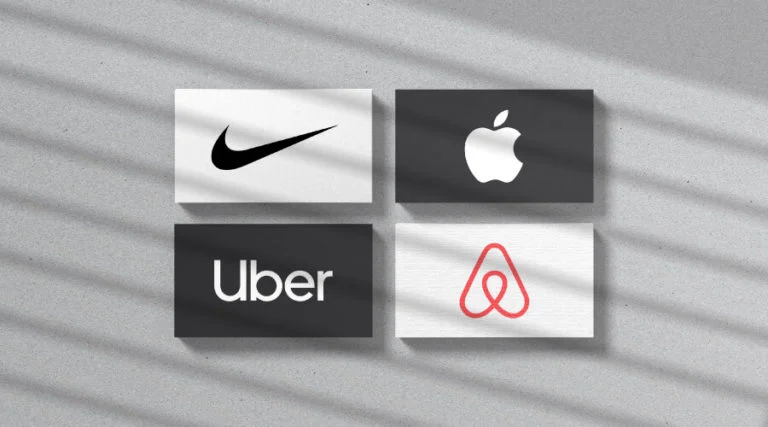Press Release
Podcast Logo Design Ideas To Suit Every Business Personality

Podcasts are an increasingly popular medium for sharing ideas, telling stories, and marketing products or services. As the popularity of podcasts grows, so does the need for businesses to create their own unique and memorable podcast logos. A great podcast logo can capture the personality and essence of a business, helping to attract and engage listeners. In this article, we will explore some podcast logo design ideas to suit every business personality, and provide tips for creating a logo that will stand out in a crowded market.
Table of Contents
Creating a great podcast logo requires a combination of creativity, design expertise, and a deep understanding of your brand’s personality and values. By exploring these podcast logo design ideas and incorporating them into your logo design process, you can create a logo that stands out in a crowded market, attracts and engages listeners, and helps your business grow and succeed.
1. Bold and Graphic logo design
A bold and graphic logo is perfect for businesses that want to make a strong visual statement. This type of logo often features a simple, yet eye-catching design, such as a bold icon or symbol, with clean, sans-serif typography. Think of the Nike swoosh or the Apple logo.
These tools typically offer a variety of templates, icons, and customization options to help users create a unique and professional-looking logo. A podcast logo maker is a tool that allows users to create their own podcast logo without the need for design expertise.
2. Illustrative logo design
An illustrative podcast logo is ideal for businesses that want to convey a more whimsical or playful tone. This type of logo often features a detailed illustration or cartoon-style design, with hand-drawn typography.
Designing a logo requires a creative process that includes ideation, image selection, color and font choice, and ensuring the design’s scalability and legibility on various platforms and sizes. It is a visual representation of a brand, whether personal or commercial. With the help of make a logo, the process can be simplified through the use of templates and design tools, making it accessible to a wider audience.
3. Typographic logo design
A typographic podcast logo is perfect for businesses that want to create a logo that is all about the typography. This type of logo often features a unique, custom font, with no other visual elements. Your podcast logo is a crucial aspect of your branding and will be displayed in various settings, ranging from small app icons to massive billboards.
Therefore, it’s crucial to ensure that the logo design is scalable and visually appealing at any size. One efficient way to design a custom logo is through the use of a logo creator. These online tools offer a user-friendly interface, an extensive library of images, icons, and fonts, as well as design templates, enabling users to create a distinctive and professional-looking logo with ease.
4. Minimalist logo design
A minimalist podcast logo is perfect for businesses that want to create a simple, yet elegant logo. This type of logo often features a single visual element or icon, with clean, sans-serif typography. Think of the TED Talks logo, which features a simple, red TED acronym with clean, sans-serif typography. To create a minimalist podcast logo, focus on using a single visual element or icon that captures the essence of your brand, and pair it with clean, simple typography.
5. Iconic logo design
An iconic podcast logo is perfect for businesses that want to create a logo that is instantly recognizable and memorable. This type of logo often features a simple, yet unique icon or symbol, with clean, sans-serif typography. Think of the Starbucks logo, which features a unique, iconic mermaid symbol with clean typography.
When it comes to creating a podcast logo, the possibilities are endless. It’s important to consider the podcast’s niche, target audience, and overall branding when brainstorming podcast logo ideas. Whether it’s incorporating relevant imagery, using bold typography, or incorporating a clever play on words, the logo should be eye-catching and memorable. Ultimately, the goal is to create a logo that accurately reflects the podcast’s unique personality and message.
The Bottom Line
This requires generating podcast logo design ideas that are tailored to match the unique personality and branding of different businesses. The logos should effectively communicate the brand’s identity, values, and message to the target audience.
PhotoADKing offers a diverse collection of logo design templates to cater to various requirements. Alternatively, users can exercise their creativity by designing logos from scratch. Moreover, PhotoADKing has an extensive image library consisting of over a million icons, backgrounds, and photos, and hundreds of free fonts, all accessible through its online logo maker tools. With these ingredients, users can easily create the perfect logo that suits their brand image and stands out online.
Press Release
Benefits of Using a Software Application for Doctor Online Reputation Management

For this reason, a lot of people are beginning to use software to manage their internet business reputation. This is done to make sure they have all the information they require about a clinic, hospital, or other establishment before taking a person there. However, patients must use this software package in order for this to happen. to ensure that they are providing reviews and compliments for the technique they examined. All of these advantages and benefits come from using this monitoring software application for your clinical procedure or company.
It encourages the marketing of a facility or clinical practise.
The fact that it encourages the marketing of the medical practise or establishment is one of the most important reasons why using online reputation monitoring in the healthcare industry is a great idea. However, this will only help the company if you receive positive reviews, recommendations, and comments.
It promotes advertising and marketing because the software will make it much easier for people to find the practise online if they are looking for it. After that, they may choose if this is something they should consider employing or not. However, it will also include negative remarks and also evaluations.
letting your patients know how your practise is doing
When you employ physician internet reputation monitoring software, you can be sure that you are telling your clients the truth about your practise. enabling them to express exactly how they perceive the technique or clinic in their own words. And they believe that what they believe can change the approach to make it much better for the patients.
Because you aren’t the one waiting in the waiting room, this is a great concept. In addition, they might have access to information that you do not. Giving your people a voice in your strategy can be a smart idea because of this. When they create an online evaluation, they can accomplish this.
Make it easier for others to find you online.
Generally speaking, this benefit is the same as the marketing and advertising benefit. Due to the doctor’s online reputation monitoring software, specifically a Google search, people can find your approach online. making it simpler for new customers to find your approach.
However, they will also find this to be simpler if you receive a lot of negative feedback. This is why, if any of your current patients are leaving comments, you need to make sure they are all good. Regardless of whether there are techniques that can’t be found online, this can help or hurt your practise.
provides a mechanism for you to communicate with people
It gives you a way to communicate with people thanks to the medical online Amazeful reputation management software. Make sure potential customers can tell that you genuinely value your clients’ experiences in your waiting area and with your service.
The only thing to keep in mind is that, under any circumstances, you should never comment negatively on someone. The only thing that can determine whether you’ll get new patients or not is what you do.
enabling you to improve the flaws in your approach.
Press Release
You become infected with RedLine malware through fake Windows 11 upgrade installers.

Users of Windows 10 have begun to get phoney Windows 11 upgrade installers, tricking them into downloading and running RedLine stealer software.
The attacks took place at the same time that Microsoft announced the broad deployment phase for Windows 11. As a result, the attackers were well-prepared for this move and waited for the ideal time to maximise the effectiveness of their operation.
As the most extensively used password, browser cookie, credit card, and cryptocurrency wallet information thief at the moment, RedLine stealer infections can have serious negative effects on the victims.
The initiative
The attackers exploited the “windows-upgraded.com” domain for the malware distribution portion of their campaign, according to HP experts who have detected this effort.
When a visitor selected the “Download Now” button on the website, a 1.5 MB ZIP archive with the name “Windows11InstallationAssistant.zip” was downloaded directly from a Discord CDN. The website looks to be an official Microsoft website.
Decompressing the file yields a folder with a size of 753MB and a remarkable compression ratio of 99.8%, which was made possible by the executable’s inclusion of padding.
An encoded parameter starts a PowerShell process when the victim runs the programme in the folder.
A.jpg file is then retrieved from a distant web server when a cmd.exe process with a 21-second timeout has finished running.
The DLL in this file is organised in reverse, maybe to avoid detection and analysis.
The first process then loads the DLL and swaps it out for the current thread context. That DLL is a RedLine stealer payload that uses a TCP connection to communicate with the command-and-control server to receive instructions on what malicious operations should be performed next on the recently compromised system.
Outlook
Nothing prevents the actors from registering a new domain and continuing their campaign even though the distribution site is currently unavailable. In fact, it’s quite likely that this is already taking place in nature.
Due to hardware compatibility issues, many Windows 10 customers are unable to download Windows 11 via the official distribution channels. Malware operators see this as a great opportunity to recruit new victims.
The strategies disclosed by HP are not surprising at this time, as threat actors are also use Windows’ legitimate update clients to execute malicious code on compromised Windows systems, as BleepingComputer discovered in January.
Remember that these risky websites are advertised through forum postings, posts on social media, and instant messages, so only rely on the official Windows upgrade system alerts.
Press Release
THE ANALYSIS RESULTS THAT THE OPENCV-BASED FACIAL RECOGNITION MODEL AS USED BY EXAM MONITORIO FAILS TO RECOGNIZE BLACK FACES MOST OF THE TIME (TODD FEATHERS/VICE).

Analysis finds that an OpenCV-based facial recognition model used by exam monitoring software Proctorio fails to recognize Black faces more than 50% of the time — A student researcher has reverse-engineered the controversial exam software—and discovered a tool infamous for failing to recognize non-white faces.
-

 Apps1 year ago
Apps1 year agoWhy is Everyone Talking About Hindi Keyboards?
-

 Social Media1 year ago
Social Media1 year agoWho is Rouba Saadeh?
-

 Apps1 year ago
Apps1 year agoThings you need to know about Marathi keyboard today
-

 Apps1 year ago
Apps1 year agoStuck with Your default Bangla keyboard? Isn’t it time for a change?
-

 Social Media1 year ago
Social Media1 year agoMati Marroni Instagram Wiki (Model’s Age, Net Worth, Body Measurements, Marriage)
-

 Games12 months ago
Games12 months agoTop 7 Popular Puzzle and Card Games for Relaxing Your Brain on Mobile, Featuring Solitaire
-

 Entertainment1 year ago
Entertainment1 year ago12 Online Streaming Sites that Serve as Best Alternatives to CouchTuner
-

 Entertainment1 year ago
Entertainment1 year agoMovierulz Website: Movierulzz 2021 Latest Movies on Movierulz.com
